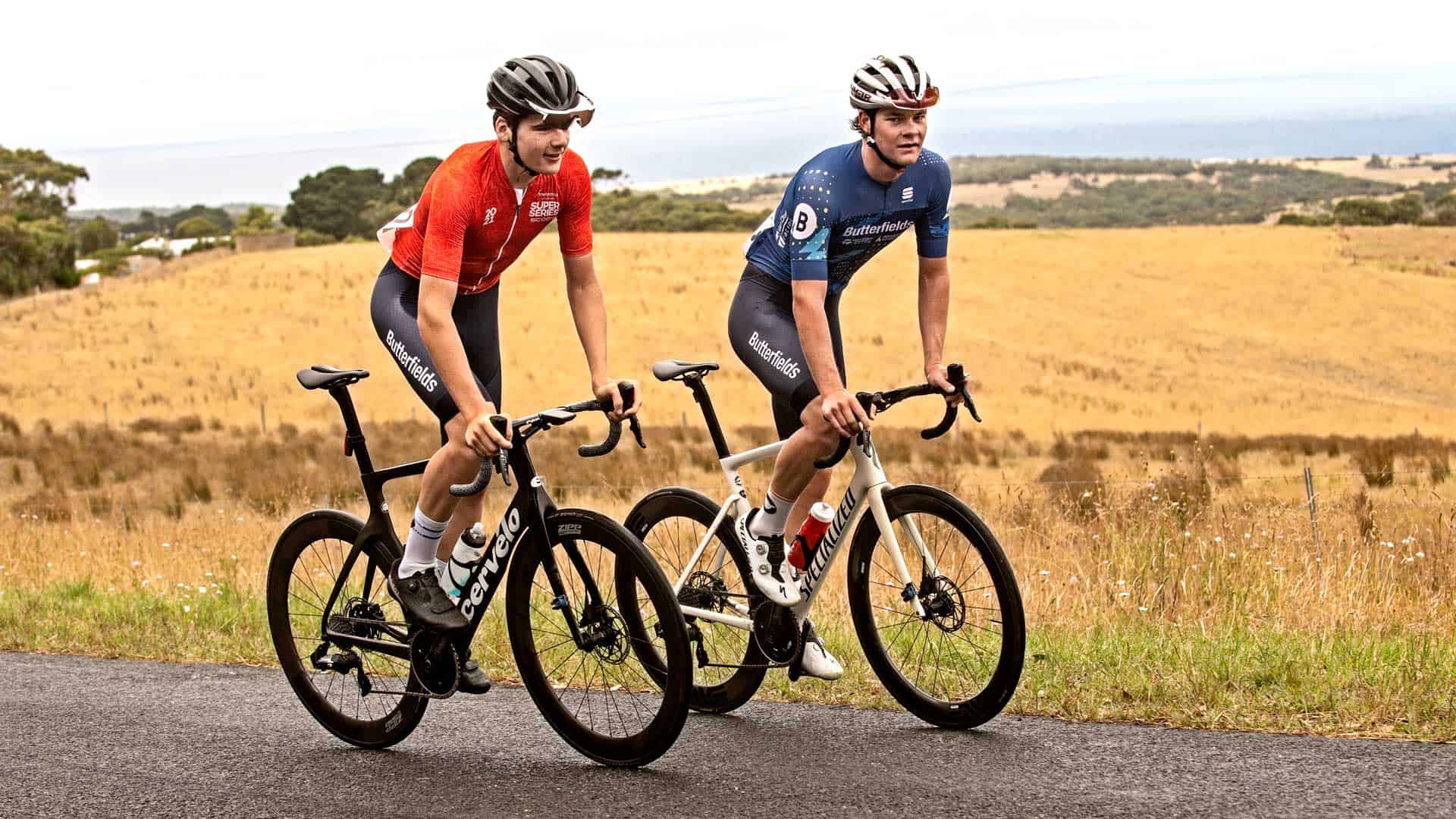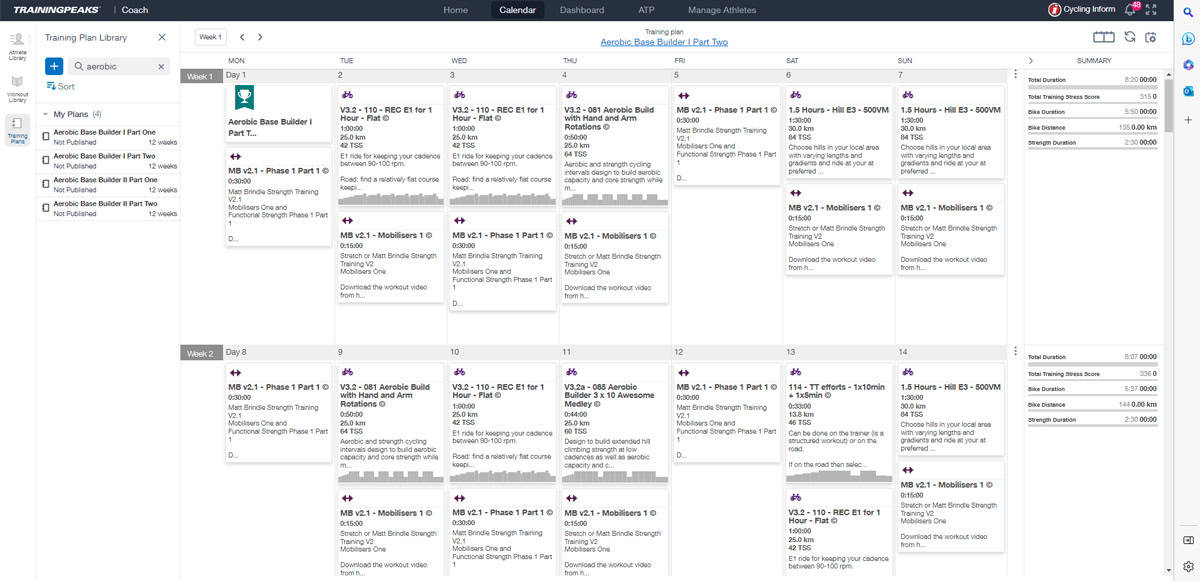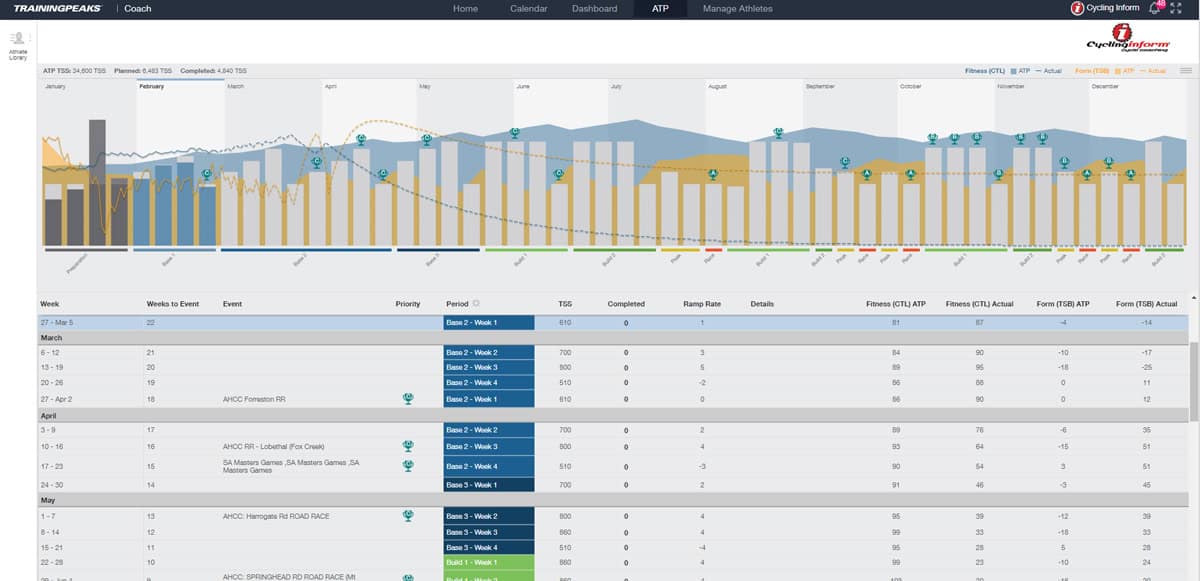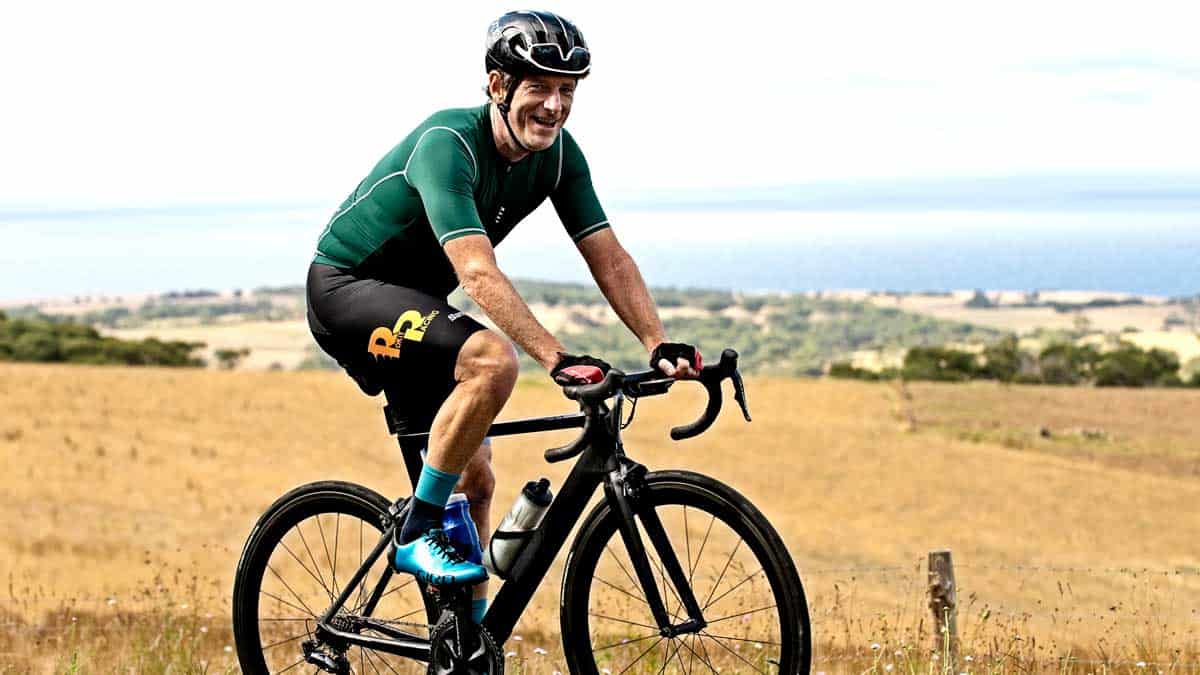Cycling is an excellent exercise for anyone looking to get in shape, lose weight, and increase endurance. Aerobic base training is critical to any cyclist’s training regimen. It provides the aerobic foundation necessary to reach peak performance and improve overall health and wellness.
Base training benefits cyclists of all levels, as it helps improve cardiovascular capacity, increase muscular endurance, and prevent burnout. Through careful planning, cyclists can create a comprehensive base training program to help them reach their goals and become stronger, faster, and healthier riders. This article will discuss the benefits of base training and provide strategies for creating an effective base training program.
What is Aerobic Base Training for Cyclists?
Aerobic base training for cyclists is a form of aerobic exercise designed to increase endurance and improve overall fitness. Base training aims to build a strong aerobic base, which will help cyclists increase their speed, power, and endurance. Base training typically consists of long, steady-state rides at a low to moderate intensity.
Base training is an important part of any cyclist’s training plan, as it helps build the foundation of aerobic fitness necessary to handle more intense workouts. Base training helps to build endurance, reduce fatigue, improve recovery, and build mental toughness. Base training also helps to reduce the risk of injury and overtraining, as it allows the body to adapt slowly to the demands of more intense training.
Benefits of Aerobic Base Training for Cyclists
There are many benefits to aerobic base training, both physiological and psychological. Physiologically, base training helps to improve cardiovascular capacity, increase muscular endurance, and improve aerobic efficiency. Cyclists with good aerobic base fitness can ride longer and faster, with less fatigue and injury.
Psychologically, base training can help to improve mental toughness, reduce stress, and increase motivation. Base training can also help improve focus and concentration, as cyclists can focus on the task at hand and hone their mental skills.
Base training benefits cyclists of all levels, from beginners to experienced riders. Beginners can use base training to gradually increase their fitness level and become more comfortable on the bike, while experienced riders can use base training to maintain fitness and prevent burnout.

Aerobic base training is essential for beginner and seasoned riders alike. It’s an important part of building the aerobic fitness required for cycling as cycling is such an endurance based sport.
Strategies for Creating a Base Training Program
Creating a successful base training program requires careful planning and dedication. Consistency is the most crucial factor to consider when creating a base training program. Base training should be done consistently and at a lower intensity than other cycling workouts.
To create an effective base training program, cyclists should focus on the following strategies:
Start slow.
Cyclists starting their aerobic base training phases should start with short rides at a low intensity and gradually increase the duration and intensity of the rides as their fitness level improves.
Focus on lower intensity as you build.
Base training should be done at a low to moderate intensity. Aim for a pace that allows you to carry on a conversation while riding. The idea of base training is to build your training volume. To do this, you’ll want to ensure that your intensity is done at a low to moderate pace; otherwise, you’ll end up getting too fatigued as your training load accumulates over several weeks. While you can still do tempo and high-intensity workouts during a base build, you’ll want to limit them when you focus on your base build to ensure you can keep your training volume high.
Do your base-building rides at higher cadences.
When we drop our cadence, we rely more on our strength to drive the bike. When we raise our cadence, we rely more on our cardiovascular fitness to drive the bike. Lifting your cadence on base building rides will help you effectively target your aerobic energy systems and muscle fibres.
Incorporate rest days when doing aerobic base training.
Rest days are essential to any training program and should not be neglected. Taking regular rest days will help your body recover and prevent burnout.
Track your progress.
Tracking progress is an important part of any training program, and base training is no exception. Tracking progress will allow you to adjust your program and reach your goals. The ideal way to monitor your overall aerobic base is your Chronic Training Load (CTL) number which can be measured in Training Peaks. CTL provides valuable insight into your current aerobic fitness, and we use it as the key performance metric when monitoring our client’s base build. Also, your Training Stress Balance (TSB) will provide insight into how quickly you are ramping up your training volume. It’s another important metric to monitor our client’s progress and ensure they are not overtraining.
Types of Workouts for Base Training
Aerobic base training can be divided into two main types of workouts: endurance and recovery. Endurance workouts are long rides at a moderate intensity, while recovery workouts are shorter rides at a low intensity. Endurance workouts are important for building aerobic and muscular endurance, while recovery workouts help provide active recovery.
When creating a base training program, it’s important to incorporate both workouts. Endurance workouts should comprise the bulk of your base-building program, with recovery workouts between longer endurance rides and shorter intense training sessions.
On the indoor trainer, we recommend the 110 – REC E1 for recovery, 003 – Fruit Bowl Ergo, 081 – Aerobic Base Builder and 093 – The 6×5 rpm spin-ups training sessions.
Example of an indoor aerobic base training session for cyclists – 003 – Fruit Bowl ergo session

Done at higher cadences, the 003 – Fruit Bowl Ergo helps you build your aerobic fitness on a home trainer. This is one of our most beloved indoor training regimens. In this session, you will be guided through training intervals to improve your aerobic fitness and raise your average speed on longer rides. It is especially suitable for recreational cyclists and competitive riders looking for an effective training exercise that will not take more than an hour. This routine will aid you in all facets of cycling, from improving aerobic capacity, boosting the number of mitochondria enzymes, increasing V02MAX, and transforming type IIb muscle fibres into type IIa. This workout is a highly efficient way of utilizing your training time.
Common Mistakes to Avoid When Doing Aerobic Base Training.
Aerobic base training for cyclists can be challenging and requires dedication and consistency. To ensure that you are getting the most out of your base training program, it’s important to avoid common mistakes.
Overdoing it.
Base training should be done at a low to moderate intensity, so be sure not to push too hard on these rides. We recommend that you ride at an intensity factor (IF) of no greater than .7 for most of your base endurance and recovery rides.
Also, doing too much too soon can lead to injury and burnout. Using applications such as Training Peaks enables you to manage your training ramp, that’s the speed at which you build your training load over time. The number to closely monitor is the Training Stress Balance (TSB) which goes negative as your training load increases. You’ll want it to go negative because it indicates you are training enough to invoke a training stimulus. But you don’t want to go too negative for too many weeks. So, you’ll want to ensure that your TSB number returns as close to a positive number as possible every three weeks to ensure that you are getting enough recovery and not overtraining.
The training load creates the training stimulus, but it’s in the recovery when the training adaptation (your fitness) improves. The classic endurance athlete’s three week build and one week recovery training cycle has been a proven formula for years. So, all our training programs use this formula to manage the build and recovery cycles. Our training programs have the appropriate training load of build and recovery weeks built into them to maintain the proper balance between build and recovery cycles, helping you to manage your CTL and TBS.
Neglecting rest days.
Rest days are an important part of any training program and should not be neglected. Taking regular rest days, along with the three week build, one week recovery training cycles, will help your body recover and prevent burnout. We recommend that you take one rest day every week. Again, our training programs have appropriate rest days built into them.
Not tracking progress.
Tracking your progress is an important part of any training program; base training is no exception. Tracking progress will allow you to adjust your program and reach your goals. As mentioned, applications like Training Peaks help track this for you with their Chronic Training Load (CTL), Acute Training Load (ATL) and Training Balance Score (TSB) metrics, along with their performance management chart.
When working with our custom program clients, we monitor these metrics and adjust the training program (and training load) as our clients work through their program to optimise their training and ensure that they get the best training result with the limited available time they have to train.
An example of a custom training program built out in Training Peaks.

Here is an example of a custom training program focusing on building your aerobic base. It provides the appropriate mix of workouts, recovery and rest to optimise your training. It also details proper cadences and has the classic three week build, one week recovery training cycle built into it to manage your training load. This helps you develop your functional threshold power (FTP) and Chronic Training Load (CTL) while managing your Training Balance Score (TSB).
How to Incorporate Aerobic Base Training into Your Cycling Training Plan
Like with all training, there must be a purpose for your aerobic base training. If you want your training to be as effective as possible with the limited time you have to train, then we highly recommend you spend a little time on your Annual Training Plan. To do this, you identify the important events you plan to do during the year so you can work out the best times to do your aerobic base training build. Your annual training program will help you identify what periods in the year you can work on your aerobic base training and which periods of the year you’ll be focused on your specialisation phases when you are building strength and speed or tapering for your events.
With the custom training programs, we start by building the Annual Training Program in Training Peaks for our clients and then use it as the framework for building out their detailed training program.
Once you have created an annual training program, you can then work out how your aerobic base training building will fit around your events, work and family commitments and the other program phases.
An example of a custom built client’s annual training program in Training Peaks for their cycling season

The Annual Training Plan is the starting point for working out your aerobic base builds. We start with a list of events ranked by importance by the client. Here to can see in this custom built Annual Training Program, created for one of our clients, the base building phases that are incorporated into the overall plan for the year. The Annual Training Program details weekly Training Stress Score (TSS) targets and how they fit around the builds, tapers, and peaks phases for each of their events.
Adjust Your Aerobic Base Training As You Go
All annual training plans and training programs are living documents. That is, they aren’t set in stone from the day they are created. Once you start your training, use your riding data to constantly assess your progress and adjust your program accordingly. Work, family commitments, sickness, and injury interrupt your training and base build. When this happens, you’ll need to revisit your training plan and make the necessary adjustments to accommodate these events.
What To Do Next
Now that you know the benefits of base training and the strategies for creating an effective base training program, it’s time to get started. Start gradually increasing intensity and duration and focus on consistency. Track your progress and adjust your program as needed. With the proper training, you’ll be able to reach your goals and become a stronger and faster cyclist.
If you want a customised training program created exclusively to help you build, taper and peak for your events and fit around your family and work commitments, check out our custom training program service here.
Also, you can check out the results we have been getting for our clients here.






Leave A Comment